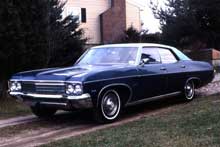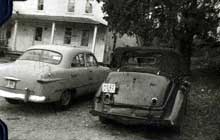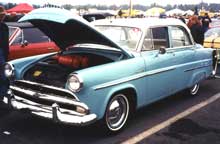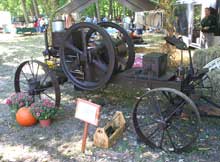Beluga
I'm not in the habit of naming my cars, but other members of my family grew up with this tradition and have their own nicknames for my vehicles, often derogatory. Such was "Beluga," for a Chevy that was deemed whale-like, despite the fact that Beluga is a white whale and my car was blue.
It was purchased out of necessity, after my '69 Buick met its end while parked on the street. I needed a car in a hurry, and looked, as was my custom at the time, for one that was old enough to be unusual and new enough to be logistically supportable. I ended up with a one-owner 1970 Chevrolet Impala Sport Sedan, the four door hardtop model.
Chevy's Impala, you'll remember, started as a prestige model of Bel Air in 1958, then became the top line Chev in '59. By 1966 it had faded to second string status as the new marquee car, Caprice, became a full series. In the final year of a design dating from 1965, the 1970 Impala had seating for six and a huge trunk large enough to take two adults, three kids, two cats and a sailboard on a two-week vacation. It was not lavishly equipped. While the 350 cid version of Chevy's venerable small block V8 gave it plenty of poke, it had the aluminum 2-speed Powerglide transmission (truth to tell, it really didn't need more than two speeds), power steering and manual brakes. No air conditioning, no cruise control, no power windows, and only an AM radio, which I promptly replaced with an AM/FM cassette unit, state of the art for the day (1986).
It had reasonably high mileage (113,000), but had been well maintained by its engineer owner. He had freshened it with a new paint job in the original two tone blue - except that the roof shade was a bit too brilliant and it stuck out like a sore thumb. It was a New England car, so I eventually had to have the rusty frame welded up (twice) and it had new engine mounts and a front transmission seal. The springs had begun to sag, so I treated it to a new set. And in four years and another 50,000 miles that was about it. At one point I replaced the valve cover gaskets, and in contrast to the Buick, which was full of sludge at 40,000 miles, the Chevy's valve covers were so clean at 150,000 that you could have eaten off them. Trust me, high mileage cars can be way better than low mileage cream puffs.
Eventually, as the kids grew into adolescents, we traded up to a more utilitarian vehicle, and Beluga, then so faded it was best photographed in the shade, was sold to a colleague at work. I considered the whale metaphor rude - the 1972-76 Impalas were much larger, while the real whale, though a bit more compact, was the 1991-96 Caprice, which ironically revived an Impala SS model. Moreover, the name has recently been Mulallied for Chevy's current flagship. Jill never liked my Impala, too large, too hard to handle. Before I found the Chevy, we had looked at a number of imported cars, one of which was a Peugeot diesel. Jill fell in love with it, so the next day we went back and bought it.




